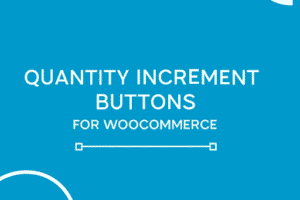In this hypercompetitive age, a sale is not a victory anymore. The real triumph is turning one-time buyers into repeat customers who don’t merely come back, but also promote your brand. Creating a go-to-market (GTM) plan that yields maximum Customer Lifetime Value (CLTV) is no longer a luxury—it is a business imperative. Yet most GTM plans remain lead gen- and conversion-centric, and not on the equally important post-sale experience.
Here in this blog, we will guide you to develop a GTM strategy that ties all the stages—lead acquisition to customer retention—together to a single goal: customer lifetime value growth. You will know how to map customer journeys, personalize messages, structure teams, and leverage data to drive long-term customer relationships that snowball over time.
What is Customer Lifetime Value (CLTV) and Why is it Important?
Customer Lifetime Value (CLTV or LTV) is the dollar value of revenue a company can anticipate from a customer during the length of the relationship. It is a profitability measure. Healthy CLTV is not just about making sales—it’s about creating relationships that grow over time.
Shifting towards CLTV:
-
Decreases buying pressure since loyal customers stay longer.
-
Justifies a higher customer acquisition cost (CAC).
-
Enables more predictable revenue projections.
-
Decreases churn with improved onboarding, support, and engagement.
In order to push LTV, businesses must approach their GTM strategy as a lifecycle, and not a sales funnel.
Step 1: Transition from Funnel Thinking to Flywheel Thinking
Traditional GTM strategies tend to view the sales funnel as a linear equation—marketing acquires the leads, sales closes them, and the relationship terminates on the sale. In a flywheel model, momentum is gained at each stage (attract, engage, delight) and that momentum is cycled back in and compounds growth.
Existing customers propel growth by:
-
Suggesting your product
-
Creating reviews and testimonials
-
Buying upgraded or new items
-
Becoming part of customer communities
A CLTV-based GTM strategy must be developed to engage and surprise, not just buy, customers continuously.
Step 2: Create the Perfect Customer Profile (ICP) for Long-Term Fit
Most GTM plans start with creating an Ideal Customer Profile (ICP), but far too many define it in terms of who is easiest to sell, not who stays around the longest or provides the most value.
To transition to CLTV, reframe your ICP on the basis of:
-
The average contract value (ACV) and prospective expansion revenue
-
Frequency of usage or stickiness
-
Low churn risk industry or company size
-
Support intensity and onboarding expenses
Ask yourself: Who are your customers who not only convert, but thrive on your product? Make your GTM motion center around them.
Step 3: Map the Whole Customer Journey—from Awareness to Advocacy
To drive CLTV, you must engage the customer every step of the way. Plot out each stage in the lifecycle:
-
Awareness – Why does the buyer need it? How do you get discovered?
-
Consideration – What are they comparing? What are they asking?
-
Decision – What motivates the ultimate conversion?
-
Onboarding – When are you able to demonstrate value?
-
Adoption – What qualities bring them back?
-
Expansion – When and how do they expand?
-
Advocacy – How do you make them brand champions?
Plot your GTM to fund all of these phases—not simply the top of the funnel.
Step 4: Get Sales, Marketing, and Customer Success Aligned with CLTV
Siloed teams kill lifetime value. Sales pushes to close, marketing moves on to the next campaign, and customer success is left to manage expectations they didn’t set.
To drive CLTV, bring all departments together around shared lifecycle metrics:
-
Marketing: Maximize campaigns for lead quality, not quantity. Use lead scoring models with LTV potential.
-
Sales: Highlight solution fit and long-term outcomes, not closing the sale.
-
Customer Success: Engage prior to close to assist setting realistic expectations.
Step 5: Personalize Messaging at Every Step
Consumers expect personalization. But personalization doesn’t just end at lead nurturing—it has to extend with the customer through their journey.
Examples of personalization throughout the lifecycle:
-
Awareness: Develop industry or role-specific content and advertisements based on pain points.
-
Consideration: Provide case studies of similar customers to establish credibility.
-
Onboarding: Personalize welcome messages according to user objectives and product complexity.
-
Adoption: Leverage in-app cues and behavior-driven nudges to encourage feature adoption.
-
Expansion: Suggest upsells based on usage history and account maturity.
-
Advocacy: Encourage top-value users to join case studies or referral programs.
The more tailored the experience, the greater the engagement—and the greater the CLTV.
Step 6: Execute Lifecycle Campaigns with Intent Data
GTM strategies of today are dependent on intent data in order to know where prospects and customers are in the journey. Software such as 6sense, Bombora, and Clearbit can identify where an account is searching for competitors or related topics to your product.
Use that information to:
-
Speed up transactions by transferring appropriate assets to sales
-
Utilize nurture streams for high-risk customers
-
Suggest features or services based on behavioral signals
-
Find upselling opportunities when usage is boosted or new subscribers are added
Lifecycle marketing fueled by real-time intent data enables your GTM team to act in advance—not in response.
Step 7: Leverage Data to Continuously Optimize for CLTV
You can’t fix what you don’t measure. Leverage data to determine the GTM movements that result in greater LTV.
Ask:
-
Which acquisition channels provide the most loyal customers?
-
Which salespeople have the highest retention in closing deals?
-
Which onboarding experiences are linked with faster time-to-value?
-
Which usage patterns forecast account growth?
Step 8: Create Feedback Loops that Foster Retention
Customers exit when they feel unsupported or unheard. Leverage GTM strategies to drive continuous feedback loops that foster loyalty.
Tactics are:
-
Surveys in-app (e.g., NPS, CES)
-
Routine follow-ups from customer success
-
Executive level business reviews of top-end accounts
-
Peer support groups or online support forums
-
Beta programs and feature request boards
These touchpoints make customers feel heard and involved, which deepens the connection and extends lifetime value.






